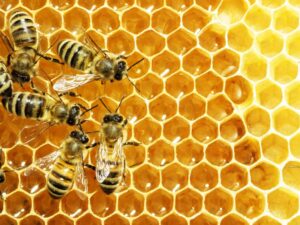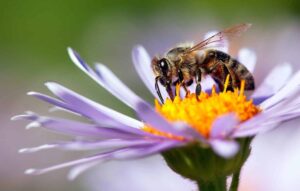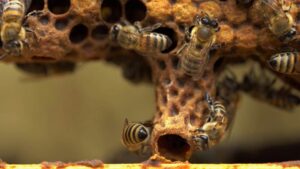Spring is officially here, and so is bee season! These incredible insects are fascinating, with around 4,000 species found in the United States alone. They’re essential for pollinating flowers and agricultural plants, and work together as a colony to produce honey. And, despite their sting, they’re surprisingly cute!
Bees are vital to our ecosystem, and as we learn more about them, we should be even more committed to protecting them. A recent study from The Xerces Society for Invertebrate Conservation and the International Union for Conservation of Nature (IUCN) revealed that 28% of bumblebees across the U.S., Canada, and Mexico are now considered threatened. Many more species are likely at risk due to habitat loss, pesticide use, climate change, and other factors, though it’s hard to estimate the full extent due to the sheer number of bee species.
The planet depends on bees, and here are some of the coolest facts about these hardworking insects:
Cool Bee Facts#

-
Only female bees have stingers.
-
The females are also the ones you’ll mostly see, as they do all the work—gathering food, building honeycombs, and protecting the hive.
-
Male bees, or drones, don’t have much to do and are kicked out of the hive in fall. Tough luck, guys!
-
The queen bee enjoys a special diet of royal jelly, which helps her develop fully functional ovaries and lay eggs. This diet is what sets her apart from the worker bees, who eat regular worker jelly.
-
While you may be most familiar with bumblebees, there are over 20,000 bee species worldwide.
-
Bees aren’t just black and yellow. Some can be green, blue, red, or even black!
-
Wild bees can be found on every continent except Antarctica.
-
Bees are master navigators and can find their way home by using the sun and Earth’s magnetic field.
-
They can fly as far as 3 miles in a single trip.
-
The smallest bee is the Perdita minima, measuring less than 2 millimeters in length.

-
Bees only eat nectar and pollen from flowering plants.
-
They are responsible for pollinating 80% of all flowering plants, including 75% of fruits, nuts, and vegetables grown in the U.S.
-
In one foraging trip, bees may visit between 50 and 100 flowers, often collecting nectar or pollen from thousands of different species.
-
Bees are sensitive to light and can see ultraviolet light, which flowers reflect. However, they can’t see red.
-
Honey bees are the most aggressive of the bunch, defending their honey and larvae fiercely.
-
Bees don’t sleep like humans. Instead, they stay still to conserve energy.
-
Not all bees live in hives. Some prefer to lay their eggs in the ground, decaying wood, or plant stems, leaving the eggs to grow independently.
-
Worker bees have varying lifespans: 6-8 weeks during spring and summer, but up to 6 months in winter.
-
Queen bumblebees can live for up to 5 years.
-
On average, a worker bee only produces 1/12th of a teaspoon of honey in her entire lifetime.

-
Queen bees mate with dozens of drones in just 1-2 days.
-
A queen bee can lay up to 1,500 eggs a day!
-
Bees are the only insects that produce food humans eat.
-
Honey has been prized for thousands of years. Ancient Egyptians used it for sweetening, healing, and even embalming. A jar of honey found in King Tut’s tomb was still edible after 3,000 years!
-
Around 90% of bees live alone, with females building their own nests.
-
Approximately 70% of bees live underground.
-
A bee colony can have up to 60,000 worker bees, a few hundred drones, and just one queen.
-
The queen bee produces pheromones that influence the entire colony’s behavior, from temperament to size.
-
Drones die immediately after mating, as that’s their sole purpose.
-
Worker bees have many roles, including cleaning cells, feeding everyone, guarding the hive, and foraging for nectar, water, and sap.
-
Without bees, we’d lose 100% of almonds and 90% of apples, onions, blueberries, cucumbers, and carrots.
